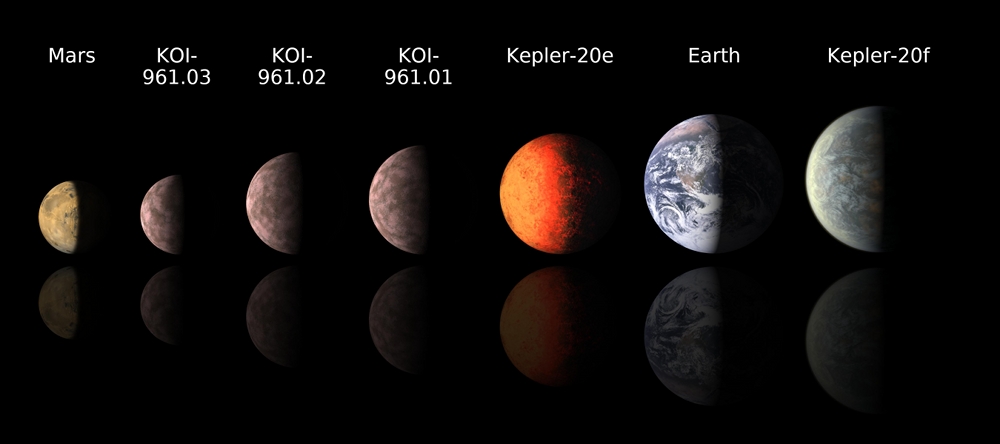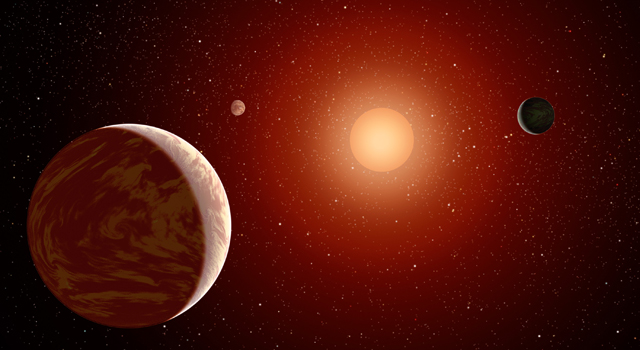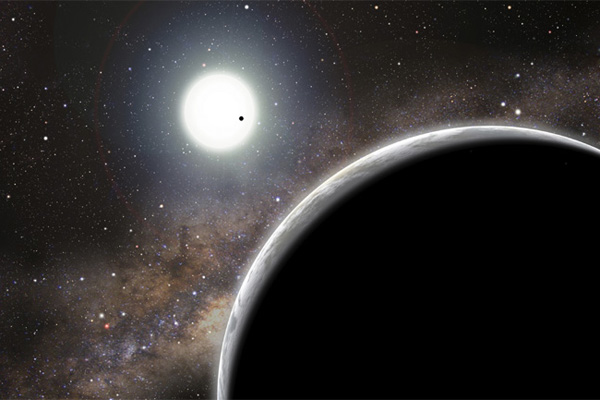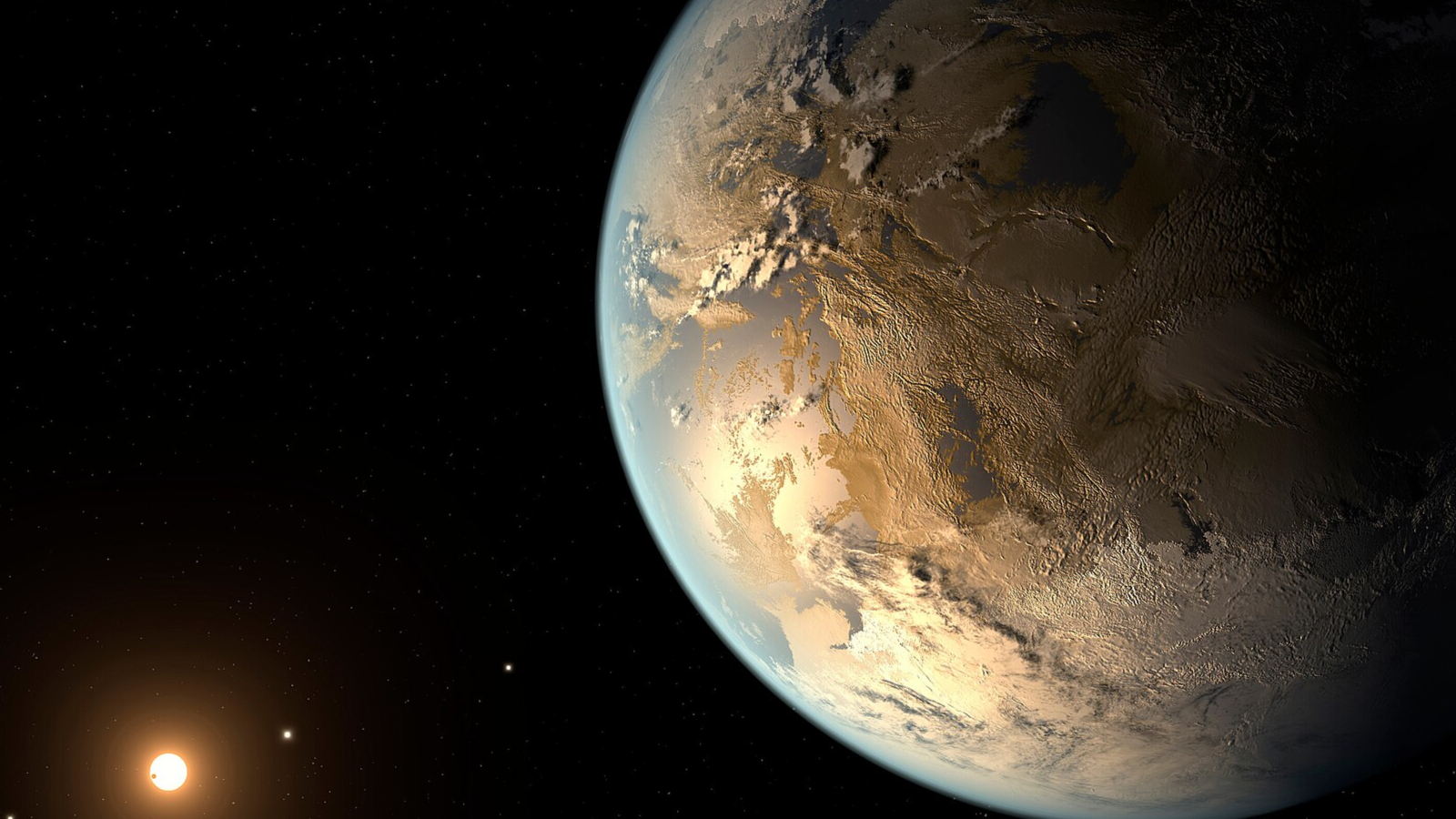
At the 2012 Astrobiology Science Conference, Astrobiology Magazine hosted a plenary session titled: "Expanding the Habitable Zone: The Hunt for Exoplanets Now and Into the Future."
Originally formulated as part of our eight-part "Great Debate" series, this panel of exoplanet hunters and thinkers held a lively discussion about some of the most important issues facing the search for and understanding of alien worlds orbiting far-distant stars. Part one was the first portion of this panel discussion. Here is Part Two:
David Grinspoon: Let's talk a little bit about our current concepts of habitability and how they are changing. Whether they are adequate, or inadequate in a way that could possibility lead us astray in our observational programs, and what we can do maybe to keep refining those concepts.
There's this almost cartoon concept of habitability that we all use. It is very useful when we talk to the public of this Goldilocks Zone, where there's this inner edge and outer edge defined by the surface stability of water. And that's what people sometimes refer to as the classic habitability zone. It's useful as far as it goes. [The Strangest Alien Planets (Gallery)]
But I was recently at the Exoclimes II meeting, which was a really interesting meeting because it was a meeting of the minds between exoplanet people and mostly terrestrial and planetary science climate modelers, who of course both think about planets, but think about them using very different tools and very different perspectives. And one thing that you realize when you get into these discussions is that there are so many pathological cases, and planets are so complex. A phrase that I like to use is that "Planets are more like people and less like protons." In other words, no two planets will be alike, and in the details they’re all going to have their own unique biographies.
Some of the detailed modeling that people are starting to do now, you realize you can't really separate habitability from inhabitants. And there are so many ways that the interaction between life and the planet has been important in the history of the Earth, that if we applied some of these same simple concepts to our solar system, we might miss some important things about the Earth.
And then there is the other interesting point that Vikki brought up, which is that Earth throughout most of its history wasn't anything like Earth is today, even when it was an inhabited planet. It didn't have the atmospheric signatures that it has today and so forth. So are we too stuck on looking for another Earth and are our concepts of habitability at this point sort of mechanistic and simplistic, and does it matter? Any thoughts from the panel?
Get the Space.com Newsletter
Breaking space news, the latest updates on rocket launches, skywatching events and more!
Vikki Meadows: I guess I will start off with that one. I think you're right in the sense that we have tended to present a more cartoonish version of habitability as this semi-major axis plus star, and there you have your answer. But I think there is a growing realization that habitability really is very much a multi-parameter system. And it depends very strongly on the interaction not only of the components of the planet itself, but of the planet with its environment, which includes its host star and also all the other sibling planets in the system.

So I think there is a very rich field in habitability now where we look at all these different interactions and try and understand the factors that affect habitability far more precisely, and in this more multi-parameter system. That's my sense.
Sara Seager: I'll give another one next. I think temperature is a big one. If the planet is too hot we can't have the complex molecules needed for life. But my favorite one related to this is actually about atmospheres. Because what I think most of the community hasn't adopted yet is the idea that we are going to have such a huge range of atmosphere mass and partly composition, and we haven't really explored fully what that means. [Planets Large and Small Populate our Galaxy (Infographic)]
Let's take an example of our own planet and people who are worried about global warming or climate change. When I left Boston yesterday, the temperature was like 85, almost 90 degrees. Which maybe if you lived in Atlanta that is not a big deal, but that's not suppose to happen in March. So we are worried about just parts per million of carbon dioxide increase.
But now imagine for a moment we don't really know what sets the mass of an atmosphere. Imagine we have planets slightly bigger than Earth that have more massive atmospheres, those things are going to be hot. So the cool thing about this is that we could have many more habitable planets that are farther from the star. The bad thing is that we really don't have a handle on what sets atmospheres. So we may just be entering a stage in exoplanets where we live with uncertainty. And we might all here work very hard for the next ten years and be able to tell you what makes a habitable planet, but how that maps on to the frequency and which planets are habitable, we might just have to leave that one alone until our descendants actually get great observations.
Dirk Schulze-Makuch: Looking for Earth-type planets is what everyone would think to do the first thing. But then you really have to be a little bit more open-minded and consider cases like [Jupiter’s moon] Europa where you could even have
multi-cellular life below the ice layer. Or [Saturn’s moon] Titan — what kind of possible life there would be with methane as a solvent.
We usually consider Mars nowadays borderline habitable, maybe it was habitable in the past. And in the case of exoplanet Gliese 581d, which is basically around a red dwarf, it’s on a Mars-equivalent orbit, and it is a Super-Earth. Now just imagine that we have, instead of Mars which is relatively small compared to Earth, some kind of a planet that is ten times the mass of Earth, in the orbit around what is now Mars, then you would think, okay it has ten times the mass, it still has a lot of atmosphere there. It would probably have water on it and there's possible life. So we really have to be putting all these kind of parameters into our considerations when evaluating that.

And then the other applications, perhaps with a mission that wasn't designed for exoplanets and you have very limited capabilities, and you have to pick just one, or maybe there are cases where you want to design follow-up opportunities that are selected for a particular type of exoplanet. And for that particular type of mission you need to zoom in on just those that meet a certain set of criteria of detectability. So I think it is important we ask, "Why are we asking this question?" And adapt our definition of habitability towards the question we are answering.
Sara Seager: Let's go over that one more time. So a planet that has the potential to have life on it. Why is that not the most interesting planet out there?
Eric Ford: Well, I would argue that you have no clue whether or not it has the potential to have life on it.
[Laughter]
Sara Seager: But do you think that the planets with life are the most interesting, with the chance of having life are the most interesting? Are you agreeing or disagreeing with that particular point?
Eric Ford: I think certainly the potential to have life on it is one thing that makes it very interesting. I wouldn't want to hint that it is the only thing that makes the planet interesting. But certainly if we were competent that that was a possibility, it would be one that we would want to follow-up with future observatories.
Dirk Schulze-Makuch: I mean this is exactly the point Sara points out. Because for the main public, the main interesting thing is that there is life on it. And not only microbial life, but intelligent life. That's why the exoplanet stuff resonates so much with the public.
Sara Seager: Let me just jump in for one second to say, yes, the public wants to find intelligent life.

Eric Ford: But I would say our obligation is to do what’s best, and not what some people in the public who have never thought about it for more than thirty seconds might want.
Sara Seager: Let's just wait a second to deal with this. Really, I think it is not just the public. And it’s not all exoplanet researchers. But I'd say it is a large fraction of them that really want to find a habitable world. I think this audience is already self-selected, but just in case I am wrong, how many people think that, out of exoplanets, the most interesting planets are the ones that are potentially habitable?
[many in the audience raise their hands]
I like what Eric is saying, and we have debated this a lot. You want to be able to observe everything with your space mission. But that becomes complicated too.
Vikki Meadows: I think what Eric has done is formulate very nicely the reason why we focus on liquid water on the surface of the planet. And a lot of people have criticized us, saying, "That's very Earth-centric -- how do you know there aren't other solvents for life?" and "What about underneath the crust of a planet?" and so on. And the argument is, yes, but we have to be able to observe something interesting. And that is the key. That is why we as exoplanet observers tend to have this strange bias towards liquid water sitting on the surface. Because then the mass of the bio-sphere is also on the surface and it gives us a better chance of detecting life in the global spectrum of the planet.
David Grinspoon: So in a sense we are looking under the street light, but hopefully there's a lot of interest to observe under the street light. It's a scary thought that if life in the universe is actually dominated by intelligent whales on Europa-type worlds, then we have no way of detecting that now, at least given our current methodology.
Sara Seager: I wouldn't put it quite as narrow as looking under a street light. Because we said we would take any planet with any mass, with a big atmosphere, with anything you want as long as the life is generating something that we can see. So it excludes like life in the deep sub-surface. Especially the life that operates very slowly, that just divides cells once in a while but it just doesn't generate enough for us. So yes, it is under the the street light, but it's not really that narrow.
Vikki Meadows: Yeah, I'd like to point out too that under the street light here on Earth, there is such a huge diversity of metabolisms. And again looking at the Earth through time, you are still not looking at the modern-day Earth as your only example of a habitable planet. You have this other suite of metabolisms and environments. And so even with that single criterion that looks very restrictive, liquid water, you could still have an enormous diversity of planets to look for habitability on.
You can watch the full "Great Exoplanet Debate" here: https://connect.arc.nasa.gov/p68qflmgnhk/?launcher=false&fcsContent=true&pbMode=normal
This story was provided by Astrobiology Magazine, a web-based publication sponsored by the NASA astrobiology program.
Join our Space Forums to keep talking space on the latest missions, night sky and more! And if you have a news tip, correction or comment, let us know at: community@space.com.

Space.com is the premier source of space exploration, innovation and astronomy news, chronicling (and celebrating) humanity's ongoing expansion across the final frontier. Originally founded in 1999, Space.com is, and always has been, the passion of writers and editors who are space fans and also trained journalists. Our current news team consists of Editor-in-Chief Tariq Malik; Editor Hanneke Weitering, Senior Space Writer Mike Wall; Senior Writer Meghan Bartels; Senior Writer Chelsea Gohd, Senior Writer Tereza Pultarova and Staff Writer Alexander Cox, focusing on e-commerce. Senior Producer Steve Spaleta oversees our space videos, with Diana Whitcroft as our Social Media Editor.

